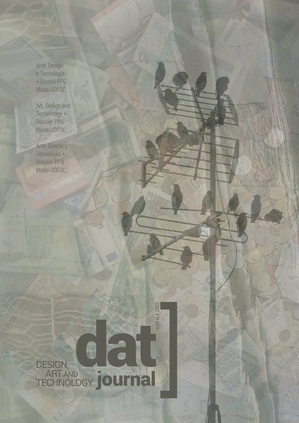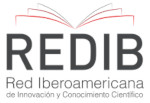Collaboration and community
design of a social network aimed at artists, with a focus on user experience
DOI:
https://doi.org/10.29147/datjournal.v10i1.867Keywords:
Digital Design, Application, Social Network, ArtistsAbstract
The period in which the first social networks emerged is named Web 2.0; this is the context in which the creation of communities on the Internet is observed. With new technologies, users can share their own content, identify similar interests and form bonds. In the case of artists, it is noted the shortage of safe spaces for this audience, since the current social platforms focus on a marketing bias, aimed at creating portfolios; often not being a welcoming environment for sharing amateur works. In this scenario, this study aims to design a social network that allows the development of the artistic community. To this end, the framework proposed by Garrett (2011) was used, which structures the project towards user experience in five planes: Strategy, Scope, Structure, Skeleton and Surface. Finally, the result is a high-fidelity prototype of the social network “Cheers!”, which purpose is to encourage mutual and positive engagement between users.
Downloads
References
APPTOPIA. About Paigeeworld - Art Community. 2018. (https://apptopia.com/ios/app/571154498/about)
BADIGER, K. G., PRABHU, S. M., & BADIGER, M. 2018. Application of Web 2.0 and Web3.0: An Overview. International Journal of Information and Movement, 119–125. DOI: https://doi.org/10.26761/IJRLS.3.2.2017.1263
BAXTER, Mike; IIDA, Itiro. Projeto de produto: guia prático para o design de novos produtos. 3. ed. São Paulo: Blucher, 2011.
COOPER, Alan. About Face: The Essentials of Interaction Design. 4 ed. Indianapolis: Wiley Publishing, 2014.
DECK, Andrew. AI-generated art sparks furious backlash from Japan’s anime community. Rest of World, 27 out. 2022. (https://restofworld.org/2022/ai-backlash--anime-artists/)
EDWARDS, Benj. Artists stage mass protest against AI-generated artwork on ArtStation. Ars Technica, 15 dez. 2022. Disponível (https://arstechnica.com/information-technology/2022/12/ArtStation-artists-stage-mass-protest-against-ai-generated-artwork/)
FARDO, M. L. A gamificação aplicada em ambientes de aprendizagem. In: Renote. Novas tecnologias na Educação. V. 11. N. 1. Cinted – UFRGS. 2013. (https://seer.ufrgs.br/renote/article/view/41629/26409) DOI: https://doi.org/10.22456/1679-1916.41629
GARRETT, Jesse James. The elements of user experience : user-centered design for the Web and beyond. 2. ed. [S. l.: s. n.], 2011.
GIBBONS, Sarah. Journey Mapping 101. Nielsen Norman Group, [s. l.], 9 dez. 2018. (https://www.nngroup.com/articles/journey-mapping-101/)
GOOGLE PLAY. Artfol – Apps on Google Play. 2024. (https://play.google.com/store/apps/details?id=com.Artfol&hl=en_US)
HASSENZAHL, Marc. The hedonic/pragmatic model of user experience. 2007. In: LAW, Effie; VERMEEREN, Arnold;
HASSENZAHL, Marc; BLYTHE, Mark (org.). Towards a UX Manifesto. Lancaster, p. 10-14, 2007.
LOWDERMILK, Travis. Design centrado no usuário. [S. l.]: Novatec, 2013. (https://www.google.com.br/books/edition/_/_XqKDQAAQBAJ?hl=pt-BR&gbpv=1&pg=PA4)
MURR, Caroline Elisa; FERRARI, Gabriel. Entendendo a gamificação: o que é, para que serve, potencialidades e desafios. Florianópolis: UFSC : UAB, 2020. Recurso eletrônico. (https://sead.paginas.ufsc.br)
PAIGEEWORLD. Goodbye from PaigeeWorld. 2019. (https://web.archive.org/web/20190917235722/https://membership.paigeeworld.com/goodbye/)
SCHLATTER, Tania; LEVINSON, Deborah. Visual Usability: Principles and Practices for Designing Digital Applications. Waltham: Morgan Kaufmann, 2013.
SIMÃO, J. Relação entre os Blogs e Webjornalismo. PRISMA.COM, 3, 148-164, 2006 (https://ojs.letras.up.pt/index.php/prismacom/article/view/2115)
Downloads
Published
How to Cite
Issue
Section
License
Copyright (c) 2025 DAT Journal

This work is licensed under a Creative Commons Attribution 4.0 International License.


























